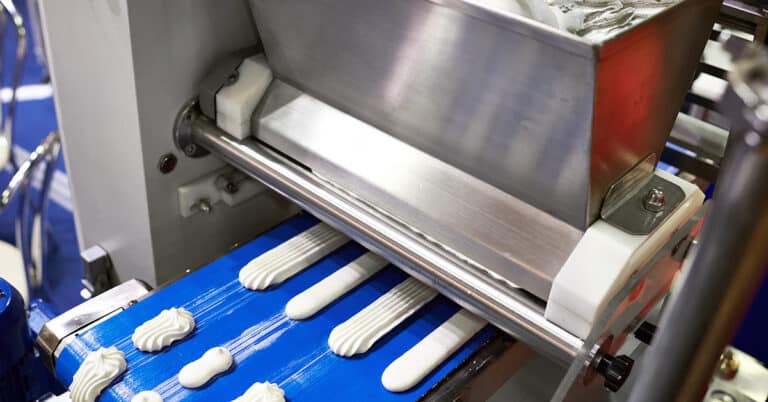As society and industry continue to adjust to COVID-19, lives and routines must adapt to a “new normal.” With increased knowledge and tactics to slow the worldwide spread of COVID, businesses, as well as individuals, are tasked with taking steps to overcome the challenges that the pandemic has presented.
The scale of this disruption has significantly affected business, and manufacturing is no exception. In fact, the impact of COVID-19 on the manufacturing industry has had implications on production, demand and supply chains — three key areas that underpin standard manufacturing cycles and processes.
How has COVID-19 impacted manufacturing? In this blog, we’ll examine the results and effects of the disease on demand and the supply chain, and how manufacturers have responded — and continue to do so.
The COVID-19 impact on manufacturing
Many workers in the U.S. and abroad have been called upon to remain at home and away from others in order to limit the potential spread of COVID-19. A major byproduct of this pandemic effect on manufacturing has been disruption to production and supply chains, as goods and commodities in the upstream supply chain have been produced in lower quantities, and sometimes not at all, in the months since the disease began to spread.
Supply chain disruption creates several problems, which some manufacturers have already begun reporting:
- Delivery delays — In one electronics industry survey, more than two-thirds of respondents reported being told to expect delays. While the average quoted delay is three weeks, 15% of respondents have been quoted delays of six weeks or more. Manufacturers are forecasting actual delays of five weeks — a full two weeks in excess of what they are being quoted.
- Increased costs — Most manufacturers are attempting to maintain production levels in anticipation of a return to business as usual and an accompanying increase in demand. However, in order to maintain production in the face of supply chain disruption, manufacturers have had to seek alternative suppliers. These often have higher costs, which some manufacturers have been forced to pass along to customers.
- Uncertainty — More than two years since the discovery of COVID-19, uncertainty has remained one of the few constants in the manufacturing business landscape. Manufacturers who have been able to pivot and remain nimble by adapting to new business realities have experienced the greatest success, exhibiting the importance of data, trends and the ability to extract useful knowledge from them.
The demand question
On the demand side, the coronavirus impact on manufacturing has yielded two distinct results, with decreased demand in some areas and an increase in others.
- Decreased demand — As industries such as travel have seen more significant fluctuations in demand — with airlines and cruise lines experiencing pronounced peaks and valleys correlated with spikes and reductions in COVID cases — other industries have had to weather demand reductions as well. These include reduced demand in import and export facilities and related materials, reduced energy demand, including reductions in petrochemical operations, and more.
- Increased demand — At the other end of the spectrum, consumer packaged goods and medical equipment and supplies, including ventilators, are seeing major spikes in demand and pressure to increase production. Demand for items such as toilet paper and hand sanitizer also spiked as the gravity of the pandemic became clear. Manufacturers of these products are now running 24/7 in order to meet global demand. Demand for electronics and consumer packaged goods has spiked throughout the COVID era, leading to shortages, delays and significant price increases. On the medical front, ventilators and personal protective equipment like face masks are recognized as a critical need, and manufacturers have stepped up production in order to meet the spiraling demand.
Staying resilient and looking ahead
More than anything else, the pandemic highlighted the need for manufacturers and other businesses to respond and adapt to unexpected scenarios. While it is nearly impossible to predict the specifics of the next global disruption — which is bound to occur at some point — it is well within the reach of manufacturers to institute the right practices and processes that will enable them to pivot and adjust to unpredictable, unexpected changes in market demand and supply chain issues.
Manufacturers must:
- Think strategically about supplies — Keep a pipeline of new suppliers; buy ahead to secure inventory/parts with limited availability; and utilize approved substitute parts and materials from secondary suppliers.
- Communicate with customers and supply chain stakeholders — Update customers about delays; shape demand through competitive prices related to products with higher inventory; and communicate effectively with suppliers about data and forecasting needs.
- Plan and strategize ahead — Actively assess supply and demand disruptions; utilize historical and real-time data from the past couple years; and scenario plan for potential operational changes and disruptions.
The impact of production changes on manufacturing equipment
Whether manufacturers are increasing capacity or adjusting production in response to demand, these changes can have a major impact on equipment performance, maintenance schedules and practices, and the ability to meet demand in a timely manner – especially in the case of medical equipment production, as lives truly hang in the balance if that production is delayed.
As pioneers in the field of industrial maintenance management and support, Advanced Technology Services is able to provide the advanced people, processes and technologies to meet demand surges, ensure that production schedules are met and conduct critical repairs when a piece of equipment is down. These critical asset support services can make the difference between meeting demand and missing deadlines. For more information about how we can help you at this critical time, contact us today.






